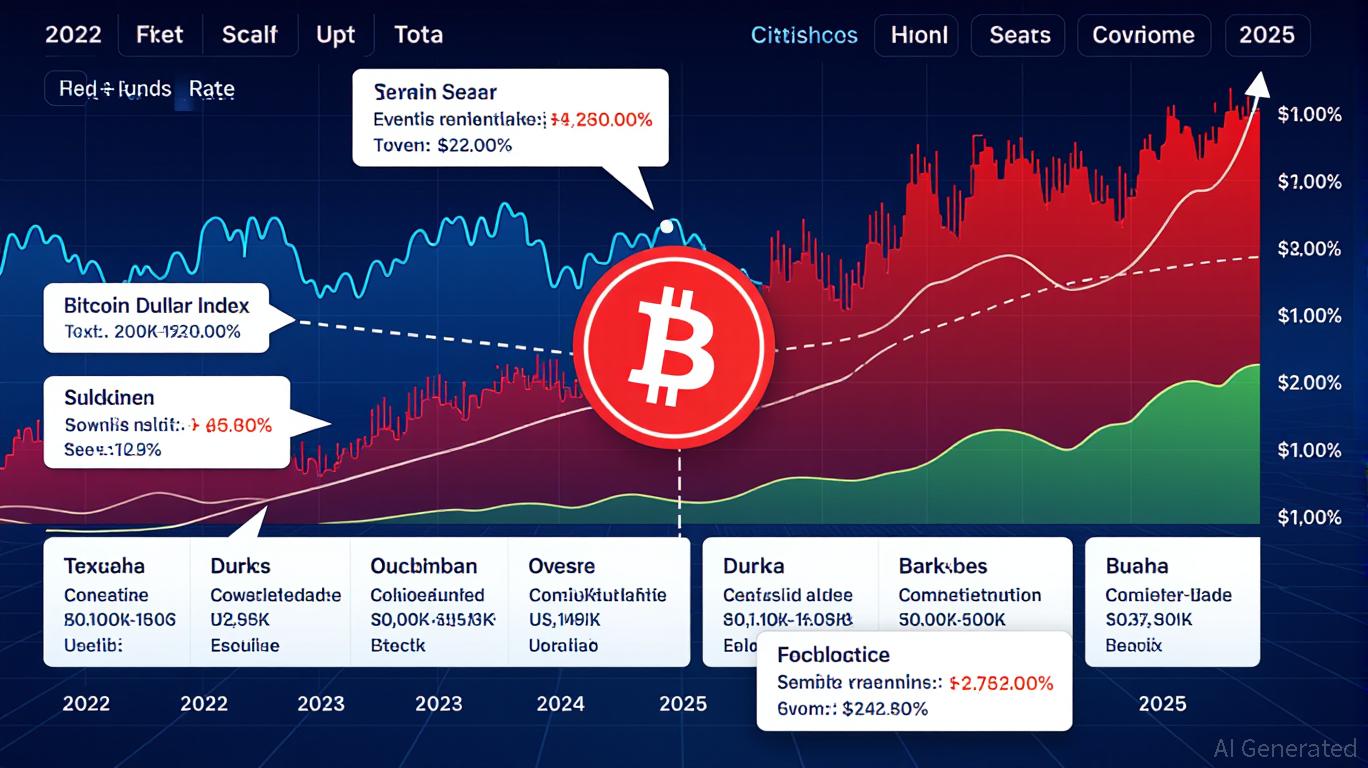Bitcoin’s Latest Price Swings: Exploring the Causes and Potential Prospects
- Bitcoin's 2025 price drop to $1.7T reflects macroeconomic pressures and shifting investor sentiment. - Fed's cautious rate cuts and rising U.S. dollar amplify crypto sell-offs amid trade tensions. - Extreme fear index and herd behavior drive panic selling, contrasting long-term investor strategies. - SEC's ETF approval and regulatory clarity may unlock institutional demand amid evolving policy frameworks. - Strategic positioning via technical analysis, diversification, and contrarian tactics offers resil
Macroeconomic Signals: Central Banks and Risk Appetite
Central

The inflated valuations in the artificial intelligence industry have also curbed enthusiasm for riskier assets like
Investor Psychology: Fear, Herd Behavior, and Sentiment
Bitcoin’s price swings are influenced not just by macroeconomic trends but also by investor psychology.
Financial knowledge also shapes how investors respond.
Policy Responses: Regulatory Clarity and Strategic Innovation
Regulatory moves in late 2025 have brought both obstacles and new possibilities.
Still, regulatory ambiguity remains.
Strategic Positioning: Navigating the Volatility
To succeed in this macro-driven landscape, investors need a well-rounded strategy. First,
Third, applying insights from behavioral finance can improve investment choices. For example,
Conclusion
The turbulence in Bitcoin’s price during late 2025 is the result of a complex mix of economic signals, investor behavior, and regulatory changes. Despite the prevailing bearish mood, there are still chances for savvy investors to position themselves advantageously. Those who blend macroeconomic insight with disciplined, informed strategies—and who stay alert to regulatory developments—can weather the volatility and tap into Bitcoin’s long-term promise. As the market evolves, lasting success will depend more on building resilience and managing cycles than on chasing quick profits.
Disclaimer: The content of this article solely reflects the author's opinion and does not represent the platform in any capacity. This article is not intended to serve as a reference for making investment decisions.
You may also like
Solana Update: Bearish Pattern and Weakening Support Point to Solana's $99 Challenge
- Solana's SOL price faces bearish pressure, with technical indicators and on-chain metrics suggesting a potential drop to $99 if key support levels fail. - ETF inflows remain uneven, with Bitwise's BSOL ETF dominating 89% of assets but recent outflows signaling institutional caution amid weak retail demand. - The Upbit hot wallet breach triggered liquidity disruptions, while Nansen data shows 20% monthly declines in TVL, active addresses, and network fees. - Technical analysis highlights a bear flag patte

Crypto Market Caught Between Surrender and Careful Buying as Underlying Fear Dynamics Change
- Crypto Fear & Greed Index rose to 19/100 from 15/100, remaining in "extreme fear" despite broader equity market pessimism. - Structural downturn driven by leverage, liquidations, and retail capitulation, with social media bullish sentiment at 2-year lows. - Unverified $15B Bitcoin breach and institutional moves (Grayscale ETF, Bybit India) highlight safety concerns and long-term confidence. - KAS, FLR, SKY show modest gains amid "altcoin season," but isolated rallies contrast with fragile market-wide cau
Solana News Update: Changing Risk Preferences Lead to Outflows from Solana ETFs
- Solana ETFs recorded first outflows since launch, with 21Shares TSOL losing $34.37M in single-day withdrawals. - Price held near $141 despite bearish technical indicators and 20% drop in network TVL to $9.1B. - Institutional holdings remain strong at 6.83M tokens ($964M), but Upbit hack amplified short-term volatility. - Market recovery hinges on Fed's December rate decision and Solana's ability to stabilize key metrics.
Bitcoin News Update: Optimistic Long Positions and Pessimistic Shorts Clash, Intensifying Cryptocurrency Market Fluctuations
- Hyperwhale shorted 1,000 BTC at $89,765 with 3x leverage, earning $10.6M but facing $1.16M losses as BTC trades at $106,443. - Aggressive bullish bets on Hyperliquid include a 20x $30M BTC long and $92.87M in leveraged longs, contrasting with $343.89M in 24-hour short liquidations. - BTC's RSI at 66 and 15/1 buy/sell signals reinforce short-term bullishness, while $5M POPCAT manipulation risks highlight exchange vulnerabilities. - LeverageShares' 3x BTC/ETH ETFs and compounding risks in products like UDO
